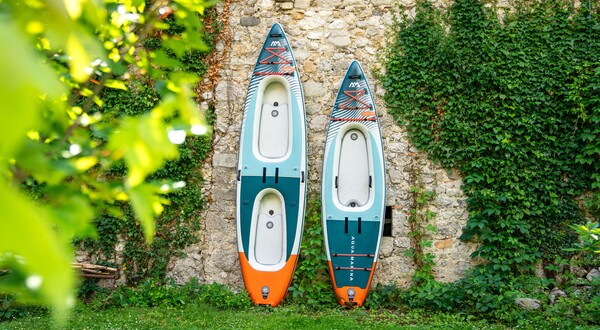- +(905) 761-8930
- 570 Applewood Crescent Unit 2 Concord, Ontario L4K 4B4 Concord ON CA L4K 0C8

Stand up paddle boarding, also known as SUP, is a popular water sport that combines elements of surfing and kayaking. It involves standing on a large board and using a single paddle to propel oneself through the water. The sport originated in Hawaii and has gained popularity worldwide due to its accessibility and versatility. Introduction to Stand Up Paddle Boards provides beginners with a foundation to start their paddle boarding journey, covering everything from the benefits of SUP to different types of boards available in the market.
Stand up paddle boarding offers a wide range of benefits both for physical fitness and mental well-being. It provides a full-body workout, engaging muscles in the core, arms, legs, and back while improving balance and coordination. Paddle boarding also offers a low-impact exercise option that is gentle on joints. Additionally, being out on the water promotes relaxation and stress reduction, providing a peaceful escape from everyday life. Whether you're looking to improve your fitness level or simply enjoy nature, stand up paddle boarding offers numerous advantages for all skill levels.
When it comes to stand up paddle boards, there are several different types to choose from, each designed for specific activities and water conditions. Some popular options include all-around SUPs, touring SUPs, racing SUPs, inflatable SUPs, and yoga SUPs. All-around SUPs are versatile and great for beginners, while touring SUPs are ideal for long-distance paddling. Racing SUPs are built for speed and performance, while inflatable SUPs offer convenience and easy storage. Yoga SUPs have a wider deck area for stability during yoga sessions on the water. Choose the type of paddle board that best suits your needs and preferences to enhance your paddleboarding experience.
When choosing the right stand-up paddleboard, it's important to consider several factors. First, determine the type of paddleboarding you'll be doing – whether it's recreational, touring, racing, or yoga. Next, consider your skill level and body weight as these will affect the board's size and volume. Additionally, think about the construction material – epoxy or inflatable – and decide which suits your needs better. Finally, don't forget about the board's stability and maneuverability to ensure a comfortable and enjoyable experience on the water.
By following these steps, you can confidently select the perfect stand-up paddleboard for your adventures.
When buying a stand-up paddle board, there are several factors to consider. First, determine your skill level and body weight as this will affect the board's size and volume. Next, consider the type of paddleboarding you'll be doing – recreational, touring, racing, or yoga – as each requires different features. Additionally, decide between an epoxy or inflatable construction material based on your preferences and needs. Lastly, ensure that the board offers stability and maneuverability for a comfortable experience on the water. By considering these factors, you can make an informed decision when purchasing a stand-up paddleboard.
When it comes to popular stand-up paddle board models, there are a few that stand out in the market. Aqua Marina is known for producing high-quality and durable SUP boards inflatable, such as the Aqua Marina Fusion and the Aqua Marina Vapor. These boards offer stability, maneuverability, and versatility, making them ideal for various water conditions and activities like recreational paddling and yoga. The stand-up paddle board models from Aqua Marina are designed with user-friendly features, ensuring a comfortable and enjoyable paddleboarding experience for all skill levels. Whether you're a beginner or an experienced paddler, these popular models are worth considering for your next adventure on the water.
To fully enjoy your stand-up paddleboarding experience, it's essential to have the right equipment and accessories. The must-haves include a paddle, leash, and personal flotation device (PFD) for safety. Additionally, investing in a good-quality SUP board bag will protect your board during transportation and storage. Other accessories like traction pads, waterproof phone cases, and dry bags can enhance convenience and functionality while on the water. Make sure you have all the necessary gear before hitting the waves or exploring serene lakes and rivers.
When it comes to essential stand-up paddle board gear, there are a few key items that every paddler should have. First and foremost, a high-quality paddle is crucial for maneuvering and propelling the board. A leash is also essential to keep you connected to your board in case of falls or strong currents. Lastly, a personal flotation device (PFD) ensures safety on the water. These three items are vital for an enjoyable and safe paddleboarding experience.
Accessories can greatly enhance your stand-up paddle boarding experience. Some popular options include a waterproof phone case to protect your phone from water damage, a dry bag to keep your belongings safe and dry, and a board rack for convenient storage and transportation. Additionally, investing in a good quality paddle board leash can provide peace of mind by keeping you connected to your board at all times. These accessories can make your paddle boarding adventure more enjoyable and worry-free.
Stand Up Paddle Boarding Techniques are crucial for mastering this sport. Start by finding your balance on the board, with your feet shoulder-width apart and toes facing forward. Hold the paddle correctly, placing one hand on top of the grip and the other hand down the shaft. Use your core to propel yourself forward, taking long, smooth strokes on each side of the board. Keep your gaze ahead and use small adjustments in body position to maintain balance. Practice these techniques regularly to improve your skills and enjoy a more fulfilling paddle boarding experience.
When it comes to basic stand up paddle boarding techniques, there are a few key steps to keep in mind. First, start by finding your balance on the board with your feet shoulder-width apart and toes facing forward. Next, hold the paddle correctly with one hand on top of the grip and the other hand down the shaft. Then, use your core muscles to propel yourself forward, taking long and smooth strokes on each side of the board. Finally, remember to keep your gaze ahead and make small adjustments in body position to maintain balance throughout your paddle boarding sessions. Remember to practice these techniques regularly to improve your skills and enjoy a more fulfilling paddle boarding experience.
To further enhance your stand up paddle boarding skills, it's important to focus on a few advanced tips. Firstly, practice different strokes such as the reverse stroke or cross-bow stroke to gain better control and maneuverability. Secondly, challenge yourself by trying out more challenging water conditions and waves to improve your balance and stability on the board. Finally, engage in strength training exercises that target your core muscles to elevate your paddling technique and endurance. By incorporating these advanced tips into your routine, you'll quickly progress as a stand up paddle boarder.
When it comes to stand up paddle boarding, choosing the right location can greatly enhance your experience. Look for calm and flat water conditions, such as lakes or bays, for beginners. For more experienced paddlers seeking a challenge, rivers with slow-moving currents or ocean waves can provide excitement. Popular destinations for stand up paddle boarding include Hawaii, California, Australia's Gold Coast, and Bali. Be sure to research local rules and regulations for each location and consider factors such as weather conditions and accessibility before heading out on your paddle board adventure.
When it comes to the best destinations for stand up paddle boarding, Hawaii tops the list with its crystal-clear waters and stunning coastline. California offers a diverse range of options, from peaceful lakes and flatwater rivers to challenging ocean waves. Australia's Gold Coast is known for its perfect waves and picturesque beaches, while Bali provides a tropical paradise with calm lagoons and colorful marine life. Research local conditions, rent or purchase equipment from trusted brands like Aqua Marina or SUP Boards Inflatable, and get ready for an unforgettable paddle board adventure.
Stand up paddle boarding in different water conditions requires specific tips to ensure a safe and enjoyable experience. In calm waters, focus on maintaining balance and using efficient strokes, while in choppy or windy conditions, it's crucial to adjust your technique and use shorter, more controlled strokes. When paddle boarding in waves, choose the right wave size for your skill level and use proper positioning and timing to catch them. Lastly, always be aware of currents and tides when paddle boarding in rivers or open water to avoid unexpected challenges.
To ensure the longevity and performance of your stand up paddle board, regular maintenance and care are essential. Here are some tips to help you properly maintain and care for your board:
By following these maintenance and care tips, you can prolong the life of your stand up paddle board and keep it in optimal condition for future adventures on the water.
Proper cleaning and storage of stand up paddle boards is crucial for ensuring their longevity and performance. To clean your board, rinse it with fresh water after each use to remove saltwater and debris. Let it dry thoroughly before storing it in a cool, dry place away from direct sunlight and extreme temperatures. Regularly inspect your board for damage or wear, and promptly repair any dings or cracks. Consider using a protective cover when transporting or storing your paddle board to prevent scratches and scrapes.


